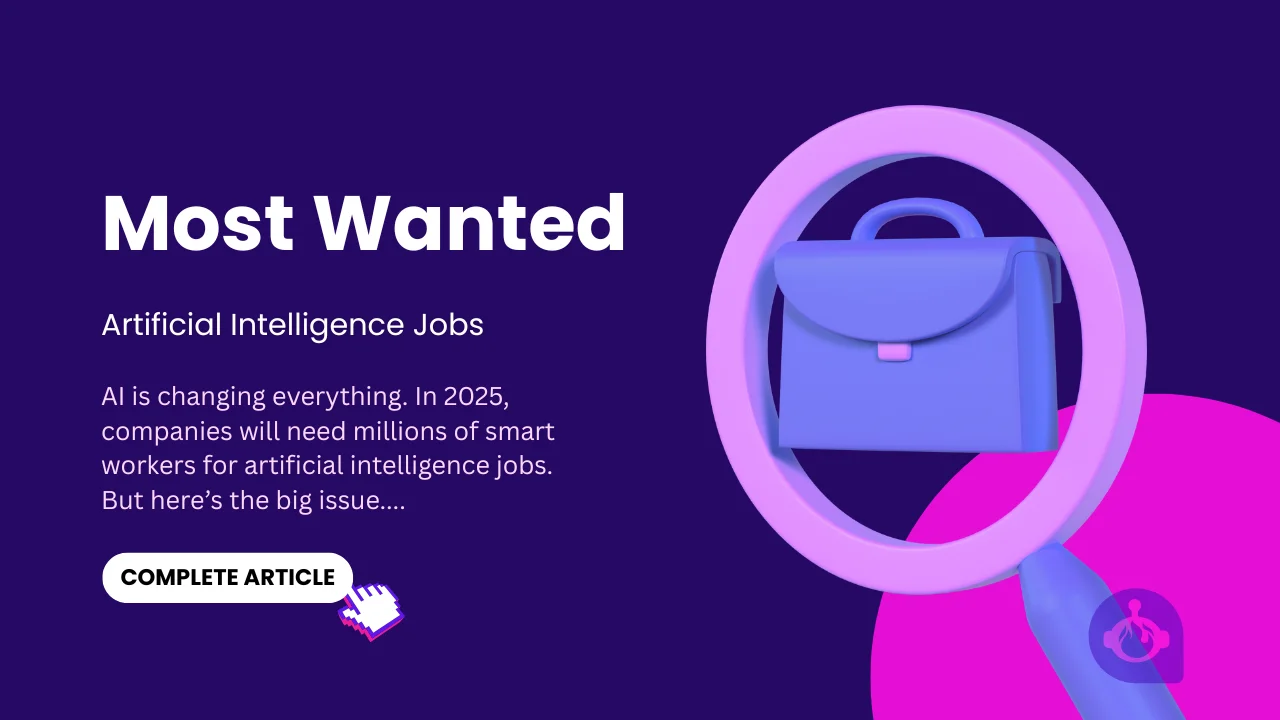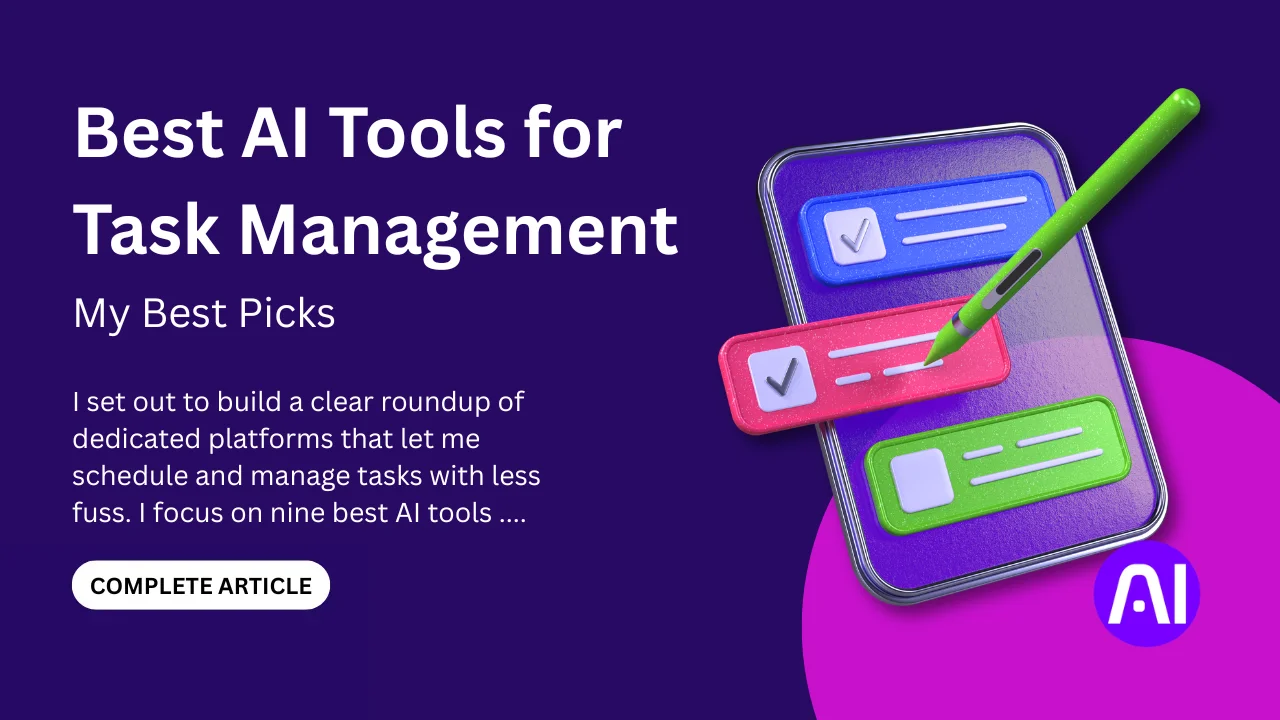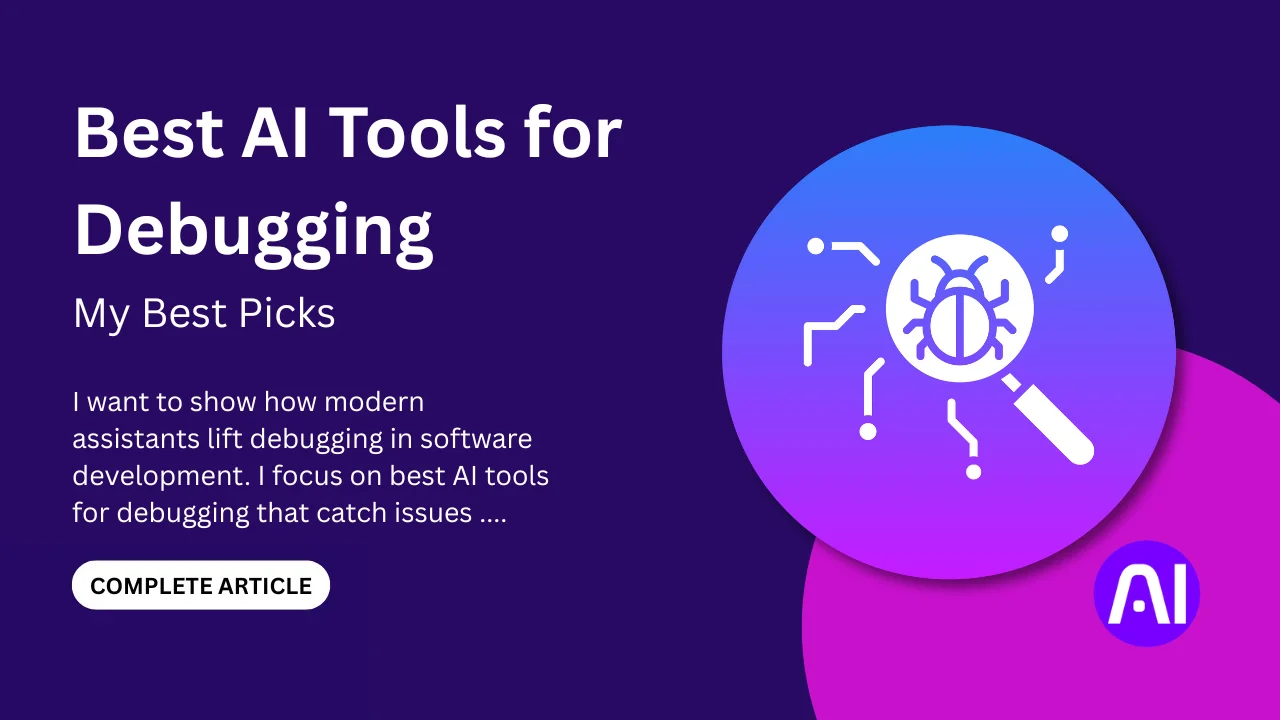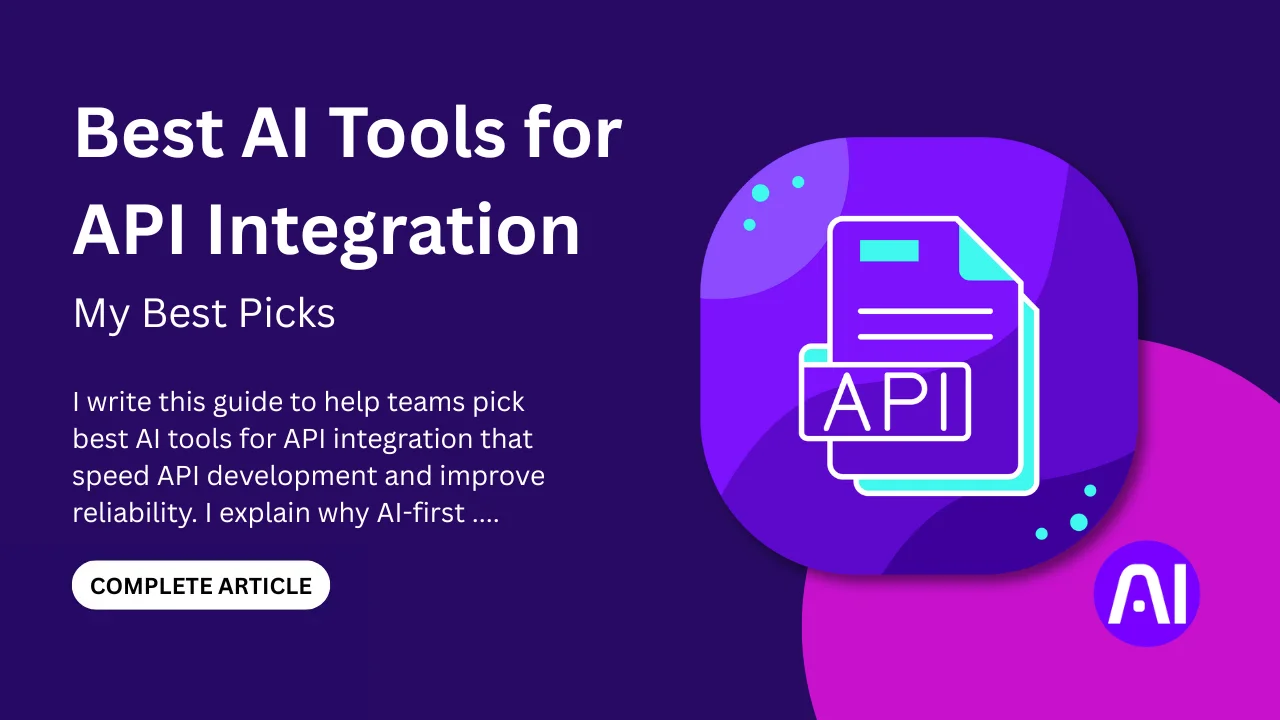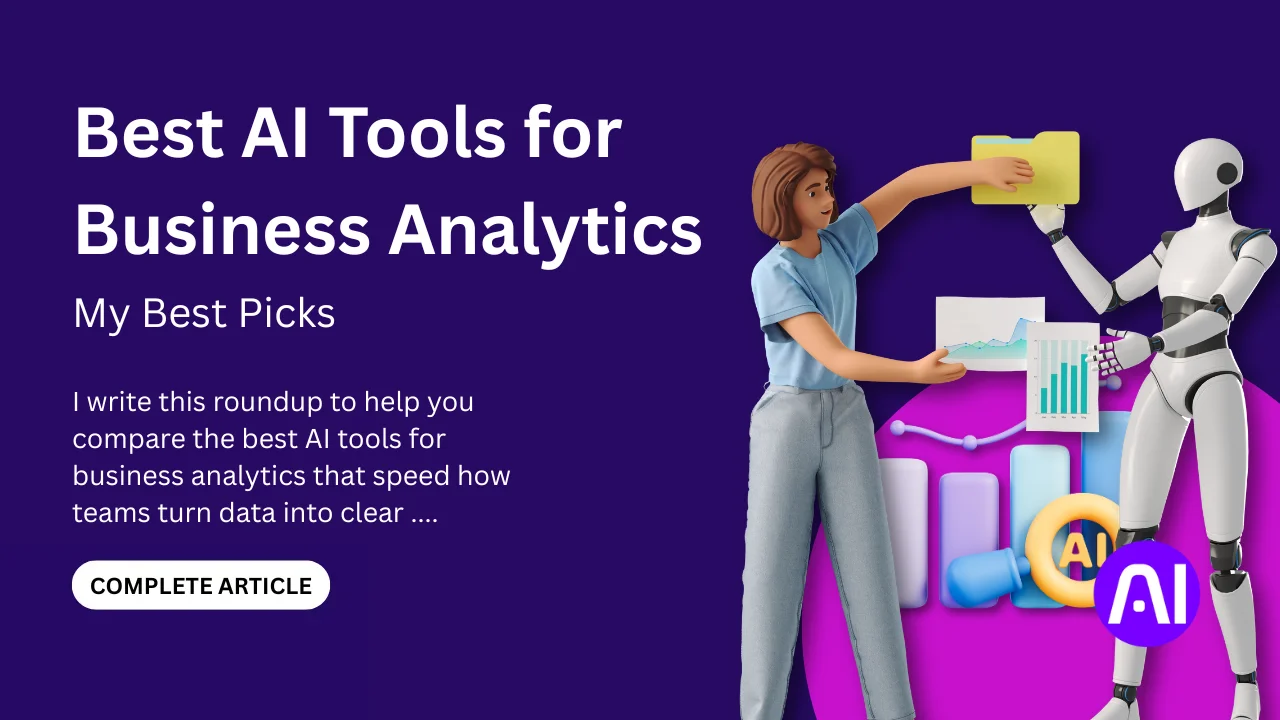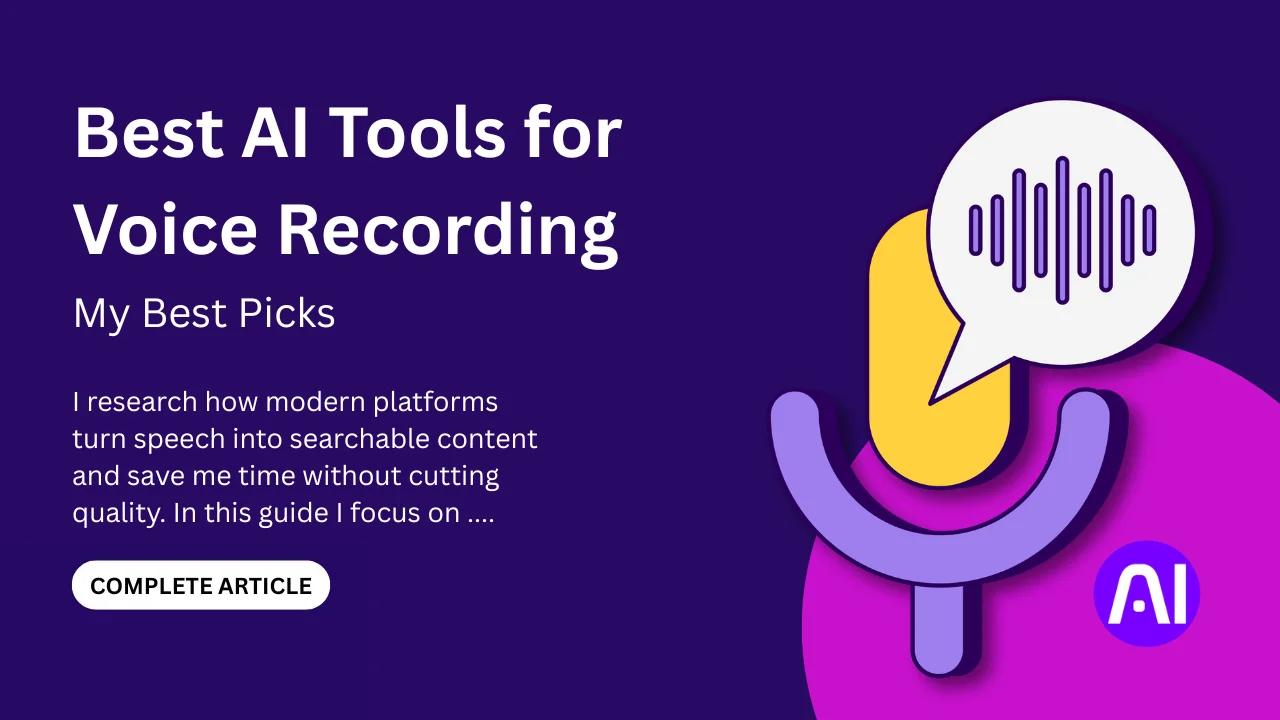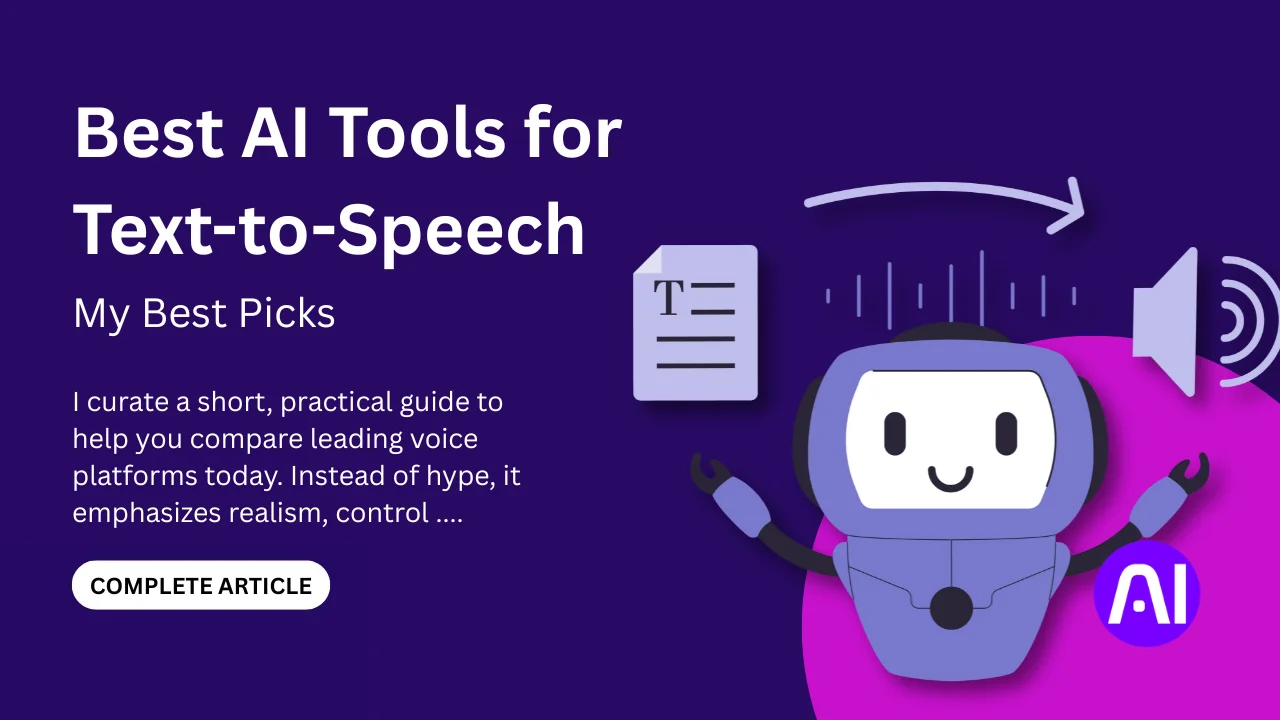AI is changing everything. In 2025, companies will need millions of smart workers for artificial intelligence jobs. But here’s the big issue. Most people don’t know how to get into this fast-growing field. If you feel stuck or unsure, this guide will help.
Looking for remote AI jobs or high-paying artificial intelligence engineer jobs? We’ll show you the best roles that companies want in 2025. You’ll also learn easy steps to get your dream job. Don’t worry about big tech words. We’ll keep things clear and simple.
This guide talks about the top companies hiring for artificial intelligence roles in 2025, the skills you need, and how you can stand out. It doesn’t matter if you’re still in school, switching careers, or already in tech. You’ll find a path that works for you. Let’s help you get hired!
Why AI Jobs Are Exploding in 2025 (And Paying More Than Ever!)

The AI revolution is not coming, it’s already here. By 2025, artificial intelligence jobs will grow 40% faster than other tech jobs. Why? Companies use AI to save time, make smart tools, and cut costs. If you want a job that lasts, this is a great choice.
Pay shows the truth:
- AI engineers earn $140K to $250K, sometimes more at big companies.
- Remote AI jobs pay 20% more than regular tech jobs.
- Starting AI jobs pay $90K, much more than old-school IT jobs.
AI vs. Traditional Tech Jobs: Why AI Dominates
The gap between artificial intelligence jobs and older tech jobs is getting bigger. Software workers are still needed, but AI careers grow faster, pay more, and offer more freedom. That’s why many smart workers are moving into AI.
AI roles grow 3 times faster than normal tech jobs. Companies need AI experts to build chatbots, self-driving cars, and smart tools. Older tech jobs face more people applying and slower pay raises. The future looks better for AI experts.
Working from home is another big plus. Over 60% of AI jobs let you work fully remote, but only 35% of normal tech jobs do. Also, AI engineers make 30% more, even when starting out. So if you want big pay and freedom to work anywhere, AI is the top choice.
Pay proves it again. A mid-level artificial intelligence engineer earns $150K to $220K. A regular software worker with the same experience earns $110K to $160K. Since more companies want AI skills, pay keeps going up and that gap will grow..
In-Demand AI Careers: Top 9 Roles (Remote & Beyond)

AI Engineer: The Most Wanted Role in 2025
AI Engineers build smart systems. They create things like recommendation tools and self-learning programs. Companies are rushing to use AI. That’s why these experts now earn $140K to $250K, or even more at big tech firms. This job is growing fast, with a 34% rise expected by 2025. That’s quicker than nearly any other tech job.
What They Actually Do
Each day, AI engineers make machine learning models and improve AI pipelines. They also launch real tools like chatbots and fraud-checking systems.
Unlike data scientists who study data, AI engineers focus on building and scaling AI tech. The top fields hiring them include healthcare for tests, finance for risk checks, and self-driving cars.
Skills That Get You Hired
To get hired, you’ll need to know Python, TensorFlow or PyTorch, and cloud systems like AWS or GCP. But soft skills count too.
Companies want engineers who can explain AI clearly to non-tech teams. Most have a computer science degree, but many bootcamp students are also landing jobs by showing strong project work.
Remote Work Potential
This job is leading the way in remote AI jobs. Built In’s 2024 report says 72% of these jobs can be done from home, especially at startups.
Tip: Look for companies offering “AI-as-a-service.” These firms often hire people from all over the world.
How to Break In
- Specialize early. Choose one focus like NLP or computer vision.
- Show, don’t tell. Post real, working projects on GitHub.
- Network smart. Talk with AI experts on Kaggle or ML subreddits.
Machine Learning Engineer: The Brains Behind AI Systems
Machine Learning (ML) Engineers are key players in AI. They turn data into smart systems that help make decisions. These experts earn $130K to $220K. The job is growing fast too — a 40% increase by 2025 (U.S. Bureau of Labor Statistics).
Core Responsibilities
ML Engineers design, build, and launch machine learning models. These models power tools like Netflix recommendations or Tesla’s autopilot.
They spend time cleaning data, training models, and making sure the systems work well in the real world. While AI Engineers focus on full systems, ML Engineers go deep into model accuracy and speed.
Must-Have Skills
You must be great at Python and R. Tools like Scikit-learn and XGBoost are used daily.
Cloud systems like AWS SageMaker and Google Vertex AI show up in 83% of job ads (2024 Indeed data). Also, knowing Docker and Kubernetes helps a lot. It boosts your chances by 35%, as companies want engineers who can launch models easily.
Remote Work Landscape
ML Engineers have strong chances to work from home. Around 65% of these jobs allow remote work (Built In 2024).
The best options are at SaaS companies or AI-first startups. These teams often work fully online. Tip: Look for words like “ML Ops” or “model serving” in job posts. They often mean remote work is allowed.
Breaking Into the Field
- Master the pipeline. Learn every step: data collection, cleaning, training, and deployment.
- Compete smart. Even small wins in Kaggle contests help you get noticed.
- Contribute openly. One merged pull request to TensorFlow is better than 10 small projects.
Data Scientist: The AI Industry’s Problem-Solving Powerhouse
Data Scientists are one of the most wanted jobs in AI. They earn between $120K and $200K+ and the job will grow 31% by 2025 (U.S. Bureau of Labor Statistics).
These experts turn messy data into clear answers that help companies make smart choices.
What They Actually Do
Each week, Data Scientists clean data, build prediction models, and make charts that explain what the data means.
They answer big questions like “Which customers will leave?” or “How can we ship faster?” They use math and machine learning to solve these problems. About 40% of their time goes into fixing messy data (2024 Kaggle State of Data Science report).
Skills That Matter Most
Python and SQL are a must. Tools like Pandas and NumPy are used every day.
Unlike ML Engineers, Data Scientists need strong business thinking. They must explain their work in ways that company leaders understand. Most have a Master’s or PhD (57%), but it’s not required if you have a great portfolio.
Remote Work Reality
About 58% of Data Science jobs are now remote (Built In 2024). Common fields include:
- FinTech (fraud detection)
- E-commerce (custom recommendations)
- Healthcare (research teams)
Pro Tip: Search for “product analytics” or “experimentation” jobs. These are 3 times more likely to be remote than pure research roles.
Landing Your First Role
- Build T-shaped expertise. Go deep in one area like NLP, but know the basics of other skills.
- Show business impact. Frame your projects like “Saved $X” or “Improved accuracy by Y%.”
- Master storytelling. Tools like Tableau and Power BI get interviews. Clear project stories get offers.
AI Research Scientist: Pushing the Boundaries of Artificial Intelligence
AI Research Scientists are at the front of new technology. In 2025, they earn big between $150K and $300K+. This job is growing fast, with a 28% rise expected (National Bureau of Economic Research). Big tech companies and top schools are all trying to hire these experts.
The Work That Shapes the Future
These scientists create new AI ideas, write research papers, and solve hard problems in deep learning and neural networks.
They don’t just build tools. They find new ways to use AI that could change whole industries. Projects might include better transformer models or exploring quantum AI systems.
Essential Qualifications
Most AI Research Scientists have a PhD in computer science or a related field. But some with a Master’s degree and published work also get in.
You’ll need to know PyTorch or TensorFlow well. You must also be good at math and teamwork. Many big discoveries come from working with experts in brain science or physics.
Remote Opportunities
While this job was once only in labs, 45% of roles are now hybrid or fully remote (Nature 2024 survey). Best places to look include:
- Corporate research labs (like Google Brain or Meta AI)
- Government teams (such as National AI Research Institutes)
- Groups working on AI safety
Path to Breaking In
New workers should help with open-source AI tools and go to small, expert conferences like NeurIPS. For mid-career pros, sharing research papers or holding patents helps you stand out.
Prompt Engineer: The Language Architect of AI
Prompt Engineering is one of the most surprising jobs in 2025. These pros earn $110K to $180K by learning how to “talk” to AI systems. The field has grown 600% since 2022 (Anthropic 2024 Industry Report) because companies need better generative AI results.
The Art of AI Whispering
Prompt Engineers write special text prompts that guide large language models (LLMs) like ChatGPT or Claude.
Each day, they build prompt chains, test how the AI responds, and make rules to keep it safe and useful. This job is different from coding. It mixes tech skills with creative language.
Core Competencies
There’s no college degree yet for this job, but top performers often have:
- Strong understanding of LLM systems
- Skills in studying language and writing styles
- Basic knowledge of psychology to guess what users want
Real-world prompt portfolios are better than resumes. Show how your prompts worked well.
Remote Work Dominance
This job is almost fully remote 92% of prompt engineering roles let you work from home (Remote.co 2024). The best companies hiring include:
- AI-as-a-service platforms
- Chatbot tools for businesses
- Creative teams in gaming or marketing
Entering the Field
Start by sharing your best prompts on sites like PromptBase. Then join open-source LLM projects. Many prompt engineers used to work in writing, content planning, or language science.
For deeper insights into becoming an AI Trainer, see our article: AI Trainer Jobs: Explore Exciting Career Opportunities.
AI Software Developer: Building the Future One Algorithm at a Time
AI Software Developers are key to building smart apps. They make $125K to $210K by combining regular coding with artificial intelligence. This job is growing 37% each year (Stack Overflow 2024 Developer Survey), thanks to the rising need for AI apps in every industry.
Here Code Meets Intelligence
These developers add ready-made AI models to apps. They also make sure everything runs fast and smooth.
If you’ve used a bank app that catches fraud or an app that edits photos with smart filters, that’s their work. Unlike AI researchers, these pros focus on real-world use. About 60% of their time goes into connecting AI systems (GitHub 2024 data).
Skills That Stand Out
Knowing Python or Java is a must. But what really helps you stand out is:
- Using AI APIs like OpenAI and Hugging Face
- Understanding how to put AI into edge devices
- Knowing the basics of ethical AI
The Remote Revolution
A full 68% of these roles let you work from home (AngelList 2024). Top places hiring include:
- AI middleware companies
- Mobile app creators
- Large business software teams
Career Launch Strategies
Want to break into this role? Start by helping on AI open-source projects. Learn tools like Docker to manage your code easily.
Many AI software developers start with web or app jobs, then grow their skills with AI-focused online courses.
AI Product Manager: The Bridge Between Technology and Business
AI Product Managers are a mix of tech and business experts. They make $140K to $230K by turning AI ideas into real tools people use. This job has grown 45% since 2023 (Product School 2024 Report), and it’s now one of the most in-demand roles.
The AI Translator Role
These managers help teams decide what AI features to build. They balance what’s possible with what the business needs.
Unlike regular product managers, they must understand what AI can and can’t do. A normal week may involve talking to data science teams, designers, and company leaders all at once.
Unique Skill Requirements
To succeed here, you need to:
- Know enough tech to talk to engineers
- Understand business strategy
- Use design thinking to help users
Many AI product managers have MBAs. But lots also come from tech jobs and learn business skills later.
Remote Work Trends
About 52% of these jobs let you work from home (FlexJobs 2024). Top hiring companies include:
- Enterprise SaaS firms
- AI startup builders
- Cloud service providers
Breaking Into AI Product Management
You don’t need to start in this exact role. People move in from tech or business jobs.
To stand out, show that you can lead teams and bring AI products to life. Build a few AI case studies, and take courses that show you understand AI for business.
AI Analyst: The Decision-Making Catalyst
AI Analysts are now key players in many industries. They earn $95K–$160K by turning complex AI data into smart business ideas. This job has grown 60% since 2023 (Forrester 2024) as companies lean more on AI tools for better decisions.
The Insight Generator
AI Analysts spend their time looking at AI results and turning them into helpful insights. They build dashboards, spot trends, and tell stories using data.
While data scientists build the models, analysts help teams understand them. For example, they explain customer churn to marketing or predict inventory needs for suppliers.
About 70% of their time is spent cleaning, visualizing, and giving context to data (Gartner 2024).
Hybrid Skillset Advantage
This role needs a mix of both technical and soft skills. You should understand basic AI and machine learning (ML) concepts. Being skilled in tools like Excel, Power BI, and Tableau is important. It also helps to know your industry, whether it’s retail, healthcare, or finance. In many cases, strong communication skills matter more than deep coding knowledge.
Strong communication skills are often more important than advanced coding in this role.
Remote Work Availability
65% of AI analyst roles are now remote (Upwork 2024). The best remote jobs are found in:
- Management consulting
- Online retail and e-commerce
- Healthcare research teams
Career Pathway
Many successful AI analysts start as regular business or data analysts. They grow by adding:
- Certifications in AI-powered analytics
- Focused training for their specific industry
- Real projects using tools like predictive models
AI Ethics Specialist: The Conscience of Artificial Intelligence
AI Ethics Specialists are quickly becoming must-haves for companies. They earn $110K–$190K to help build responsible AI systems. Since 2022, this job has grown 300% (Brookings Institution 2024) as businesses focus more on fairness, safety, and rules in AI.
Guardians of Responsible Innovation
These experts sit between tech and society. They look at AI models to check for bias, privacy issues, or harmful effects.
For example, they might test a facial recognition system for unfair results or write rules for how generative AI should be used.
Unlike regular rule-checkers, ethics pros help shape AI from the start by adding values and safety checks into the process.
Multidisciplinary Expertise Required
To do this job well, you need both tech and people skills. Many come from backgrounds in:
- Law, philosophy, or social science
- With extra knowledge of AI systems
Common tasks include building impact checklists and training tech teams to follow ethical practices. While there isn’t one required certification yet, courses in AI ethics from schools like MIT or Stanford are a great start.
Remote Work Potential
About 60% of these roles now offer remote work (Harvard Business Review 2024). Top openings are found at:
- Tech companies under government review
- Public policy teams working on AI regulation
- Nonprofits focused on digital rights
Entering This Evolving Field
People from many fields of data science, law, or sociology can move into this role.
To get hired, start by building a few real-world case studies. Pick AI topics like bias in algorithms or safety in chatbots and explain how they could be improved. That kind of portfolio shows true skill in this growing area.
How to Land a Remote AI Role in 2025
1. Optimize for ATS
To get past tracking systems, use the same keywords listed in the job post. For example, instead of saying “AI model training,” write “LLM fine-tuning” or “transformer architecture optimization.” If you’ve worked remotely, add a section called Remote Work Experience to show you can succeed in remote teams.
2. Follow Emerging Hiring Trends
Many companies now use AI tools to screen resumes. So, keep your layout simple and easy to read, don’t use columns or fancy graphics. Also, get ready for async video interviews. These are short, pre-recorded answers to common questions. Keep each video clear and under 90 seconds.
3. Target the Right Platforms
Some job boards are better for remote AI jobs. For example, Wellfound (formerly AngelList) is great for startups. RemoteOK lists global jobs. If you’re looking for research roles, try Hugging Face Jobs. These smaller platforms often have better results than big ones like Indeed.
Skill Roadmap: From Novice to AI Pro in 2025
Breaking into AI takes a clear and smart learning plan. Here’s how to go from beginner to job-ready using the best resources for each step.
Foundational Learning (0–6 Months)
Start by learning Python using Python.org’s tutorials. Learn basic statistics too. For a big-picture view, take AI For Everyone by Andrew Ng on Coursera. To get hands-on, try DataCamp’s Introduction to Machine Learning course. It teaches core ideas through simple, interactive coding.
Technical Skill Building (6–12 Months)
Next, focus on learning tools used in real AI work. Google’s free ML crash course covers machine learning basics with Scikit-learn and TensorFlow. For deeper learning, study the book Hands-On Machine Learning with Scikit-Learn, Keras, and TensorFlow from O’Reilly. If you’re interested in language models, check out the Hugging Face course on NLP.
Specialization (12+ Months)
Pick a focus area based on your interest:
- ML Engineering: Earn AWS or Azure AI certifications
- Prompt Engineering: Study Anthropic’s prompt engineering guide.
- AI Ethics: Take MIT’s Responsible AI course
Soft Skills That Get You Hired
Show off your problem-solving by joining Kaggle competitions. Improve your communication by explaining your projects on LinkedIn or writing about them on Medium. If you’re interested in generative AI, let your creativity shine by building a portfolio with fun and useful ideas.
If you’re considering roles focused on AI education or corporate training, explore our list of Top-Paying Learning and Development Jobs You Can’t Miss.
Real-World Projects & Portfolio Building for AI Careers
A strong portfolio proves your skills better than any degree. Here’s how to build one that gets hiring managers’ attention, with project ideas tailored to 2025’s AI job market.
Beginner Projects (1–3 Months)
Start with accessible but impressive applications: build a Twitter sentiment analyzer using Python and NLTK (free tutorial). Create a digit recognizer with the MNIST dataset using Kaggle’s starter notebook. Deploy a chatbot using OpenAI’s API by following their official guide.
Intermediate Showpieces (3–6 Months)
Tackle projects that mirror real industry needs: build a fake news detector using NLP and BERT via Hugging Face transformers. Predict retail demand using time series data with this TensorFlow tutorial. Design an AI-generated art gallery using Stable Diffusion and the Diffusers library.
Advanced Portfolio Pieces (6+ Months)
Work on complex systems that solve actual problems: contribute to open-source projects by fixing bugs in libraries like PyTorch (good first issues). Build an end-to-end ML pipeline from data collection to a deployed model using MLflow for tracking. Replicate recent AI research papers from arXiv and add your own improvements.
Portfolio Packaging Tips
Your GitHub should tell a story:
- READMEs as case studies: Explain the business impact (“Reduced error rate by 32%”)
- Live demos: Host models on Hugging Face Spaces
- Video walkthroughs: Record 2-minute Loom explanations of your best projects
Resume, Interview & Networking Tactics for AI Jobs in 2025
Landing your dream AI role requires more than technical skills—it demands strategic positioning. Here’s how to optimize every stage of your job search.
AI-Tailored Resumes That Get Noticed
Forget generic resumes. Hiring managers scan for 3 things in 7 seconds: relevant keywords, measurable impact, and clean formatting. Use the exact terms from job descriptions (e.g., “transformer models” instead of “neural networks”). Quantify achievements like:
- “Improved model accuracy by 18% using hyperparameter tuning”
- “Reduced inference time by 40% through ONNX optimization” Tools like Jobscan analyze ATS compatibility for free.
Interview Preparation That Works
AI interviews test three key areas:
- Technical screens: Practice LeetCode (focus on Python) and ML system design
- Take-home challenges: Structure solutions like production code (clean, documented, tested)
- Behavioral rounds: Use the STAR method with AI-specific examples (“Tell me about debugging a failed model deployment”)
Strategic Networking for AI Professionals
The best opportunities come through connections:
- LinkedIn: Engage with AI leaders’ posts + share project breakdowns
- GitHub: Contribute to trending repos (check Papers With Code)
- Communities: r/MachineLearning (Reddit) and ML Discord groups offer hidden job leads Pro Tip: After conferences (NeurIPS, ICML), message speakers about their work—this lands 5x more responses than cold applications.
Case Studies: How Real People Landed Remote AI Jobs in 2025
Real stories show what’s possible. These case studies highlight how people from different backgrounds successfully broke into remote AI roles by following focused strategies. Whether you’re switching careers or leveling up, these journeys offer practical inspiration you can apply today.
Case Study 1: From Teacher to Remote AI Analyst in Under a Year
Profile: Marcus W., Former High School Math Teacher, Atlanta, USA
Challenge: Marcus had no formal tech background and was intimidated by the AI field’s complexity. He needed a remote job that would let him stay home with his family, but didn’t know where to begin.
Action Plan: He started by taking Coursera’s AI For Everyone and DataCamp’s Introduction to Machine Learning. He then focused on visualization tools like Tableau and Power BI, and built a small portfolio analyzing education data trends using open-source datasets.
He applied only to roles with “AI analyst,” “data insight,” or “predictive analytics” in the title on RemoteOK and LinkedIn Remote Filters.
Result: Within 9 months, he landed a fully remote AI Analyst role at an EdTech company, earning $105K his first six-figure salary.
Takeaway: Non-tech professionals can break into AI roles by leveraging domain knowledge, building a focused project portfolio, and targeting remote-first companies.
Case Study 2: Upskilling into AI Engineering from Web Dev
Profile: Priya S., Front-End Developer, Bangalore, India
Challenge: Priya had 5 years of web dev experience but wanted to transition into AI for higher salary and career growth. She also wanted to work with global teams remotely.
Action Plan: She enrolled in the Google ML Crash Course and built a GitHub portfolio with an image classifier, a chatbot using GPT-3, and a recommendation engine for e-commerce. She hosted live demos on Hugging Face Spaces and recorded 2-minute Loom walkthroughs.
She engaged with open-source issues on TensorFlow GitHub and participated in r/MachineLearning threads. For job hunting, she focused on Wellfound and Hugging Face Jobs listings with “remote” tags.
Result: In just over a year, she secured a remote AI Engineer position at a US-based startup with a $160K compensation package.
Takeaway: Developers can successfully transition into AI by building a project-rich portfolio, contributing to open-source, and positioning themselves on niche hiring platforms.
Conclusion
Artificial intelligence jobs are not just growing, they’re changing how the world works. In 2025, companies in every industry are racing to hire skilled AI workers. They’re offering great pay, remote work options, and the chance to work on exciting new tech. Whether you’re into building systems, doing research, or setting ethical rules, this is the perfect time to jump in.
The road to an AI career is easier than it seems. With the right skills, real-world projects, and smart networking, you can land one of these in-demand roles. Don’t forget, every pro started as a beginner. What matters most is getting started and keeping your momentum.
Want to start your AI career today? Take one small step, join a course, begin a simple project, or reach out to someone already in the field. The future is wide open, and it belongs to those who take action now.
FAQs
Q: What are the top companies hiring for artificial intelligence roles in 2025?
The top companies hiring include Google, Microsoft, OpenAI, Amazon, NVIDIA, and Meta. Startups in fintech, healthcare, and robotics are also growing fast.
Q: How to start a career in AI and machine learning with no experience?
Learn Python, take beginner AI courses, and build simple projects. Platforms like Coursera, DataCamp, and Hugging Face are great for starters.
Q: What skills are needed for artificial intelligence jobs in 2025?
You’ll need Python, machine learning tools (like TensorFlow), cloud platforms, and strong problem-solving skills. Communication and ethics also matter.
Q: Can I get an AI job without a degree?
Yes. Many companies hire based on portfolios and real projects. Bootcamp grads and self-taught learners often land entry-level roles.
Q: Are remote AI jobs available in 2025?
Yes. Over 60% of AI jobs offer remote or hybrid options, especially at startups and global tech firms.
Q: What’s the average salary for AI engineers in 2025?
AI engineers earn between $140K–$250K. Entry-level roles start around $90K, and top experts can make over $300K.
Q: Which industries are hiring the most AI professionals?
Top industries include healthcare, finance, e-commerce, autonomous vehicles, and cybersecurity.
Q: How long does it take to become job-ready in AI?
With consistent learning, you can be job-ready in 12 to 18 months. Focus on projects, not just theory.
Q: Is machine learning the same as artificial intelligence?
Not exactly. AI is the broader field, while machine learning is a key part of it that helps systems learn from data.
Q: Where can I find entry-level AI jobs?
Check platforms like RemoteOK, Wellfound, and Hugging Face Jobs. Use filters for “entry-level” and “remote” to narrow results.

